- News
- Reviews
- Bikes
- Accessories
- Accessories - misc
- Computer mounts
- Bags
- Bar ends
- Bike bags & cases
- Bottle cages
- Bottles
- Cameras
- Car racks
- Child seats
- Computers
- Glasses
- GPS units
- Helmets
- Lights - front
- Lights - rear
- Lights - sets
- Locks
- Mirrors
- Mudguards
- Racks
- Pumps & CO2 inflators
- Puncture kits
- Reflectives
- Smart watches
- Stands and racks
- Trailers
- Clothing
- Components
- Bar tape & grips
- Bottom brackets
- Brake & gear cables
- Brake & STI levers
- Brake pads & spares
- Brakes
- Cassettes & freewheels
- Chains
- Chainsets & chainrings
- Derailleurs - front
- Derailleurs - rear
- Forks
- Gear levers & shifters
- Groupsets
- Handlebars & extensions
- Headsets
- Hubs
- Inner tubes
- Pedals
- Quick releases & skewers
- Saddles
- Seatposts
- Stems
- Wheels
- Tyres
- Health, fitness and nutrition
- Tools and workshop
- Miscellaneous
- Cross country mountain bikes
- Tubeless valves
- Buyers Guides
- Features
- Forum
- Recommends
- Podcast
feature
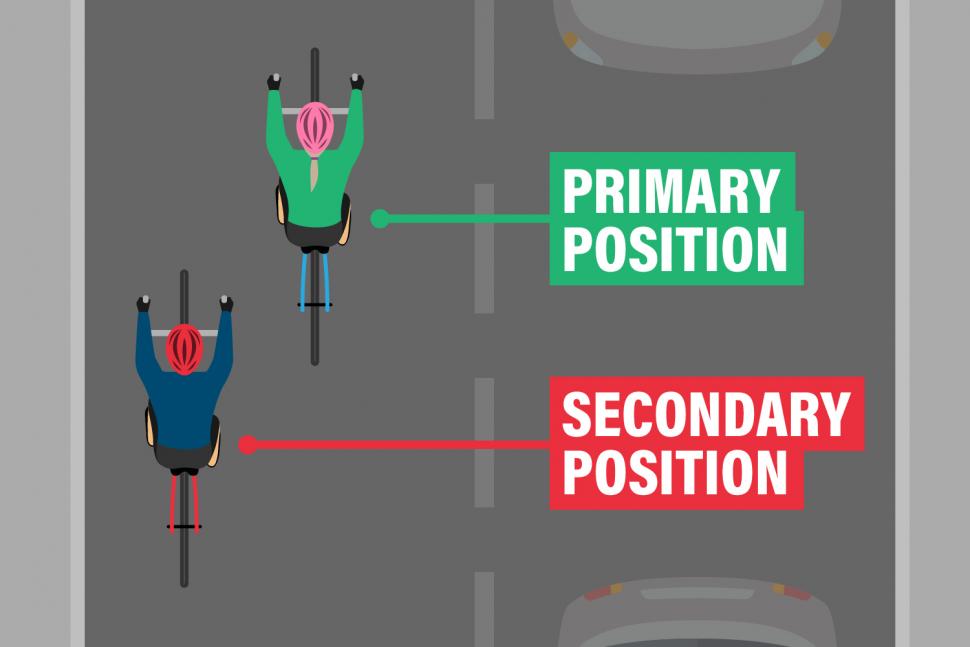 road positioning - primary and secondary position.jpg
road positioning - primary and secondary position.jpgMonday moaning: Why don't cyclists stick to the left of the lane?
Armchair experts, especially those on social media, will often tell you that cyclists should be positioned on the left side of the lane, never centrally, but what's the truth? Here's what you need to know to set the record straight.
We recently reported on road.cc that a Hove cyclist who suffered a close pass by a school bus was told that the driver thought she would have moved over – despite the fact that the space to her left was a parking bay. There's clearly some misunderstanding of correct road positioning out there.
The first port of call on matters like this is usually the Highway Code (remember that not all of the rules in the Highway Code are legal requirements), and for a while, admittedly, it said nothing about how cyclists should position themselves within a lane apart from when dealing with junctions and parked vehicles.
However, with last year's update came changes designed to better protect vulnerable users, plus some handy guidance on road positioning for cyclists.
As per Rule 72:
When riding on the roads, there are two basic road positions you should adopt, depending on the situation.
1) Ride in the centre of your lane, to make yourself as clearly visible as possible, in the following situations
- On quiet roads or streets – if a faster vehicle comes up behind you, move to the left to enable them to overtake, if you can do so safely.
- In slower-moving traffic – when the traffic around you starts to flow more freely, move over to the left if you can do so safely so that faster vehicles behind you can overtake.
- At the approach to junctions or road narrowings where it would be unsafe for drivers to overtake you.
2) When riding on busy roads, with vehicles moving faster than you, allow them to overtake where it is safe to do so whilst keeping at least 0.5 metres away, and further where it is safer, from the kerb edge. Remember that traffic on most dual carriageways moves quickly. Take extra care crossing slip roads.
Despite what some people would have you believe – spoiler alert: not everything written on social media is true – there's no rule that says cyclists should always be on the left-hand side of the lane (we'll talk about the related subject of riding two abreast in a separate feature, by the way).
One cause of confusion could be Rule 160, aimed at all riders and drivers rather than cyclists in particular: "Once moving you should keep to the left, unless road signs or markings indicate otherwise. The exceptions are when you want to overtake, turn right or pass parked vehicles or pedestrians in the road."
This refers to the left hand-side of the road, though, not to the left hand-side of the lane. Plus, there's a distinction in the Highway Code between 'must/must not' instructions which are legal requirements, and 'should/should not' and 'do/do not' rules which are advisory. Rule 160 is clearly among the latter.
One other thing the Highway Code has to say about cyclists' lane positioning is Rule 67: you should "take care when passing parked vehicles, leaving enough room (a door's width or one metre) to avoid being hit if a car door is opened, and watch out for pedestrians stepping into your path".
You need to be at least a door's width out when passing parked vehicles, and 1.5 metres is often recommended.
What about at other times?
RoSPA (Royal Society for the Prevention of Accidents) says, "Don’t ride in the gutter; there may be debris and grid covers, and it will encourage drivers to squeeze past you even if there isn’t enough room."
We all know that hugging the kerb means that when you do encounter a drain, broken glass or anything else lurking at the side of the road, your only means of avoiding it is to steer outwards – perhaps sharply – into traffic that's potentially passing at a speed much faster than you. That's clearly dangerous. Hugging the kerb also reduces your visibility to drivers coming out of side roads and drives.
In his cycling skills manual Cyclecraft – which forms the foundation of Bikeability, the UK's national standard for cycle training – John Franklin talks about two main riding positions: the primary riding position and the secondary riding position.
He defines the primary riding position as being "in the centre of the leftmost moving traffic lane for the direction in which you wish to travel", and the secondary riding position as being "about 1 metre (3 feet) to the left of the moving traffic lane if the road is wide, but not closer than 0.5 metre (1.5 feet) to the edge of any road."
Riding in the primary position, also known as 'taking the lane', is all about safety. John Franklin says that this is where you can best see and be seen, and are able to maintain the straightest and fastest course.
"The primary riding position should be your normal riding position when you can keep up with traffic, when you need to emphasise your presence to traffic ahead, or when you need to prevent following drivers from passing you unsafely," he says.
'Close pass' initiatives by police around the country promote safety by telling motorists to leave at least 1.5m of space when overtaking a cyclist, but you've doubtless experienced many coming by far closer than that. Riding in the primary position discourages this by forcing traffic behind you either to stay put or to overtake only when the opposite/adjacent lane is free.
It's often best to take the lane before passing a side road joining from the left, for example – after looking over your shoulder to make sure that it's safe, of course, and signalling if you to need to communicate your intention to other road users.
Moving out increases your visibility to traffic at the junction, gives you more space to manoeuvre if the joining traffic edges out, and stops a vehicle squeezing by and turning left across your path at the last moment.
Similarly, the primary position can be best in slow and stationary traffic, when the road surface near the edge is poor, on narrow or winding roads, and through traffic calming schemes. You can also use it when approaching 'give way' signs, traffic lights, roundabouts, when turning at junctions, and in many other situations.
No one is suggesting that you ride in the primary position just to be awkward. Far from it.
"Because the primary riding position can result in some inconvenience to following drivers, it is reasonable to ride further to the left when this could help others, so long as your own safety is not thereby impaired,"says John Franklin (his emphasis).
British Cycling says, "When riding in the primary position, [you] should travel at a reasonable speed, as part of the traffic flow. If, however, traffic is building up behind [you] and the road ahead is clear, [you] may wish to move to the secondary position to avoid obstructing other road-users unnecessarily.
"The secondary road position may be appropriate if the road is wide enough to allow safe overtaking, and the rider’s safety is not reduced by riding in this position."
Why don't cyclists always use cycle lanes?
With that in mind, you might take up the secondary road position on minor roads where there are few parked vehicles, for example. However, the take-home points are that you're not obliged to position yourself to the left of your lane, riding in the primary riding position is the best option in many circumstances, and your safety trumps another road user's wish for you to shift to the side.
Matt Woodcock, Cycling UK Training Manager said, “Whether you’re new to cycling or an old hand, you’re hopefully familiar with the concept and importance of proper road positioning – and will probably have heard the terms ‘secondary’ or ‘primary position’ and will know that you shouldn’t hug the kerb.
“In the absence of decent cycling infrastructure across most British roads, proper road positioning is one of the most important things you can do to keep yourself safe while out cycling, but it can be a bit confusing to know where you should be at which point and sometimes counterintuitive, especially if you’re new to cycling.
"To help all road users understand cyclist road positioning, Cycling UK created two short films which show where and how cyclists should ride, especially in key areas like junctions, turnings and pinch points.”
The first one covers road positioning and junctions...
...while the second offers five tips to stay safe...
Mat has been in cycling media since 1996, on titles including BikeRadar, Total Bike, Total Mountain Bike, What Mountain Bike and Mountain Biking UK, and he has been editor of 220 Triathlon and Cycling Plus. Mat has been road.cc technical editor for over a decade, testing bikes, fettling the latest kit, and trying out the most up-to-the-minute clothing. He has won his category in Ironman UK 70.3 and finished on the podium in both marathons he has run. Mat is a Cambridge graduate who did a post-grad in magazine journalism, and he is a winner of the Cycling Media Award for Specialist Online Writer. Now over 50, he's riding road and gravel bikes most days for fun and fitness rather than training for competitions.
Latest Comments
- Tom_77 5 min 19 sec ago
Rule 21 If no pedestrian signals have been provided, watch carefully and do not cross until the traffic lights are red and the traffic has stopped.
- mdavidford 6 min 30 sec ago
Point of order - the nonsense about bananas was that they supposedly had to be straight, not bendy.
- Miller 13 min 47 sec ago
AI text incoming! "Our aerodynamic engineering team meticulously optimized the frame’s streamlined design." I have grown to detest AI text as I see...
- mdavidford 27 min 52 sec ago
He's got the outfit sorted already and everything...
- MichaelWinnerRIP 34 min 37 sec ago
Seems like Dynamic Touch-Up is not sold in UK, according to the Dynamic website. Decathlon has a whitener at £4.99. Anybody tried it?
- Surreyrider 39 min 42 sec ago
Exactly - it's a silly headline. Scared = clickbait, not reality.
- maxdabrit 39 min 53 sec ago
$500 (maybe) to get this Silca advertisement in this and other articles in multiple websites . Genius !
- muhasib 1 hour 29 min ago
Maybe the Vitus brand name has some value to an open mould manufacturer?
- polainm 1 hour 30 min ago
DfT has for decades supported through incompetence the use of pavements and cycle lanes as parking bays for the beleaguered UK driver. There is no...
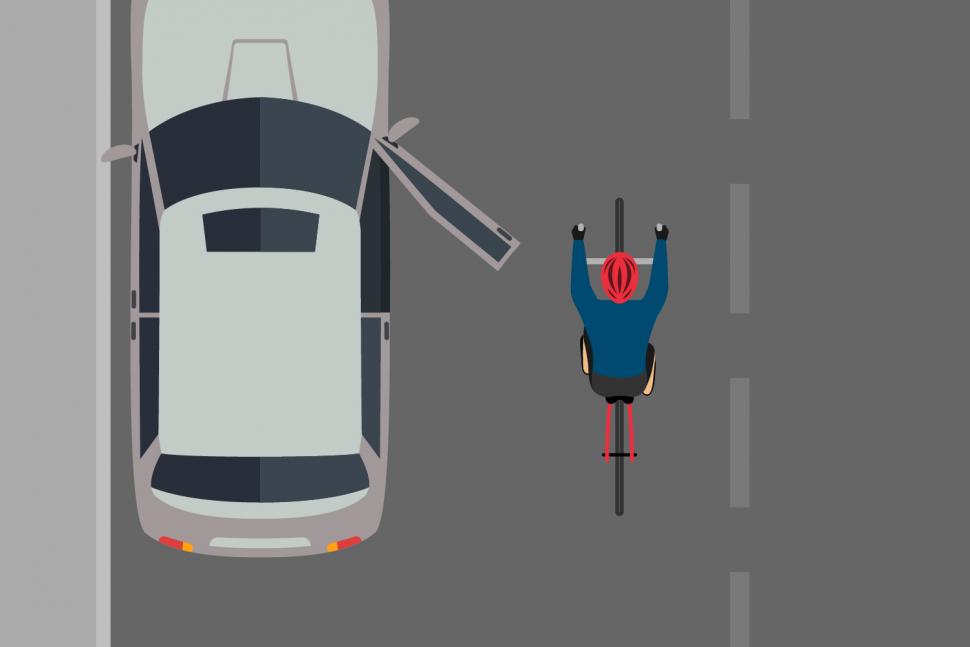
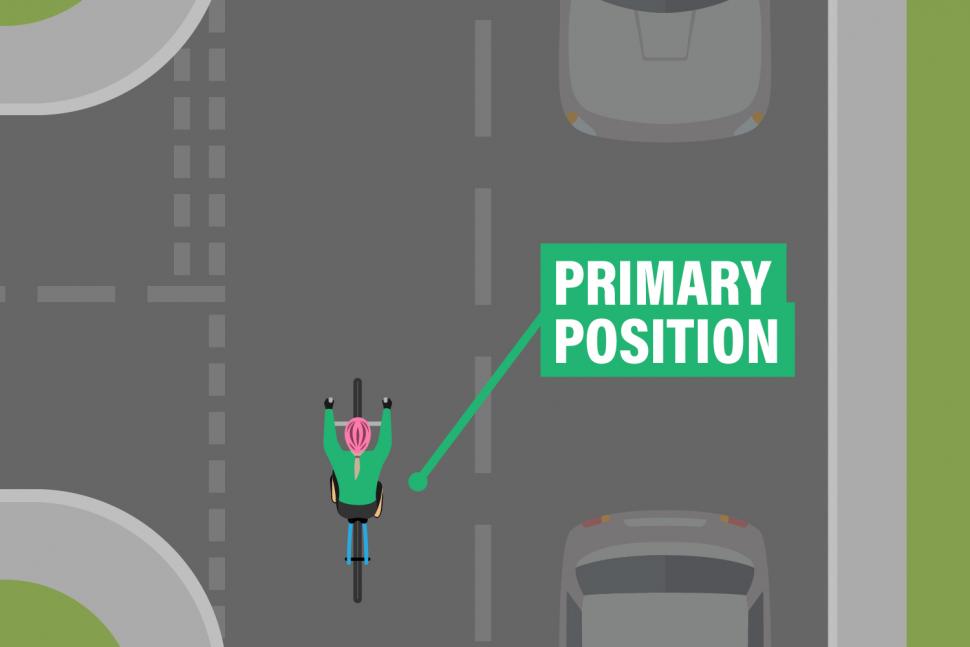
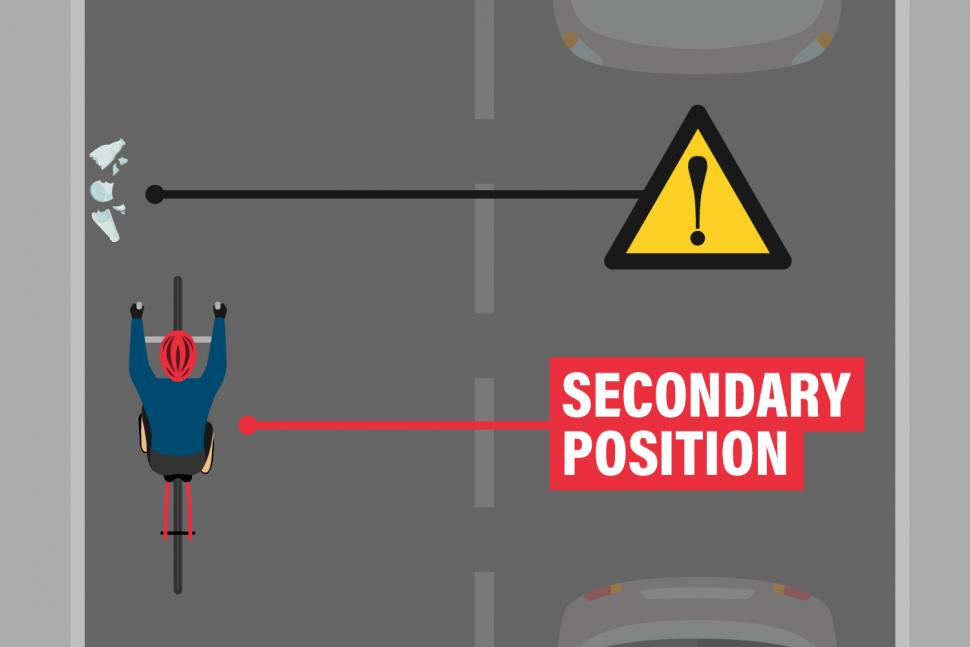
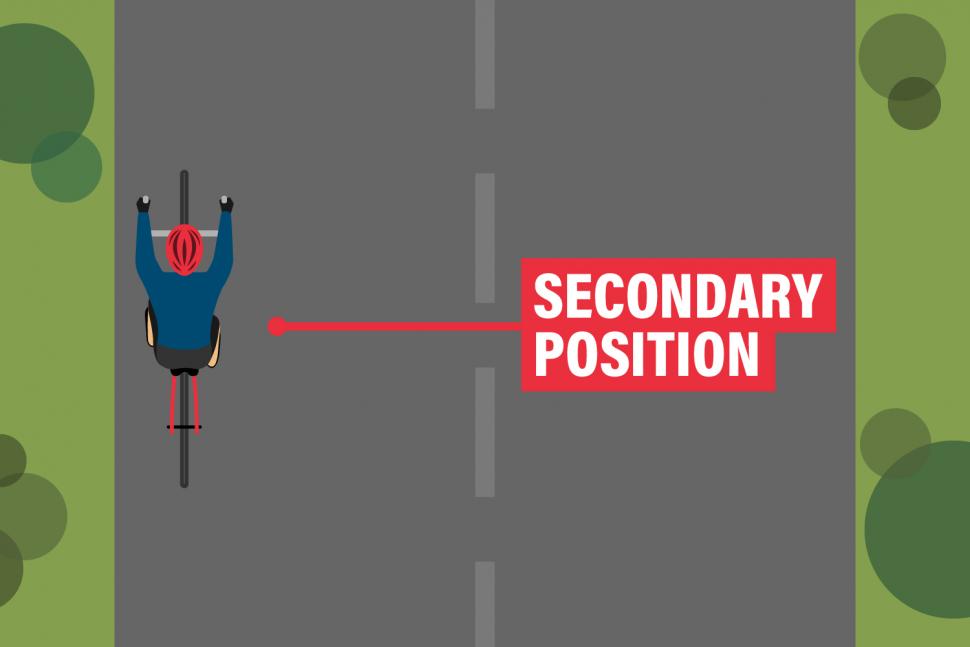
Add new comment
43 comments
I am a cycle Instructor and the Secondary and Primary positions are how we teach to our students. We also call the Secondary position the "Normal everyday riding position" which is far enough from the curb to avoid drains, broken bottles and the usual rubbish that the rain washes to the roadside. We always look behind first and then move into the Primary position for negotiating junctions etc. For overtaking parked vehicles we tell our students that the distance is "A car doors width and a little but more" and depending on the width of the road and size of the vehicle it may require riding on the other side of the road. If there is oncoming traffic they need to understand who has priorty and where to stop so they are still protected behind the parked car, but also able to clearly see past it so they will know when to proceed.
Has this actually been updated to take into account the new Highway Code?
Personally I always stick to the left because I'm just not scared of a few close passes, and I have great balance. As long as they don't actually hit me, I couldn't care less.
But I absolutely 100% get any cyclist who wants to sit centrally.
When an article's updated, couldn't it at least include a line about what was updated? I can't for the life of me work out what might have changed here.
I mean it still says "We recently reported on road.cc...", with a link to a story from Oct '19 - I know 2020 has been a year a lot of people would like to forget had happened, but even so, I think that's stretching the definition of 'recently'.
And when cars are queueing in traffic do they move over to the left side of the lane, to leave the faster moving bikes space to overtake?
No, they sit to the right and then moan about undertaking.
They press their advantage when traffic is flowing freely, we press ours when it's not - seem fair?
absolutely, stop start vehicle traffic queues shouldn't be about ratcheting the cyclist to the back.
My point is they expect slower moving road users to move left, but they do not do it when they are the slower moving vehicles
An interesting piece but find it strange that in the included safety video by Cycle UK for lane use doesn't fully promote road safety as one of the riders isn't wearing a helmet? I appreciate it is not law but in a safety video??
Not one of the most important things for keeping cyclists safe
A helmet doesn't keep you safe. Some believe (and I happen to be one of them) that it offers some protection when things go wrong, but it doesn't make you any less likely to suffer an incident, through your own fault or someone else's. So its absence or otherwise isn't really relevant to the purpose of the video.
Helmet debate!! And my usual supply of popcorn is stuck in Calais!
Protection is mainly from over hanging branches and cold air, IME.
Helmets are also good for the attachment of rear lights and other high visibility accoutrement.
Michael Schumacher's family might disagree with you about the wisdom of attaching things like lights to a proper helmet, let alone a cycle helmet.
And.... if I may be so bold to add.... "Know nothing* judges who will reduce the compensation you are paid if hit by a car and your wife who will moan at you non stop if you don't."
*That doesn't look right but I've not had my second cup of tea of the morning so please be gentle when you put me right!
Cyclists on a narrow busy road can create a convoy of vehicles behind them waiting for an opportunity to overtake. It may be helpful in these curcumstances for the cyclist to pull over and let these vehicles pass. Rule 169 of Highway Code refers to slow moving vehicles doing this, and what is a pushbike if not a slow moving vehicle? Also the cyclist may be holding up a bus and these vehicle should be given priority.
I'm fine with that when the cyclist is the slower moving user.
Then when vehicles are crawling in traffic, I'd look to them to pull to the side and let faster moving users such as cyclists and motorbikes to overtake smoothly and safely?
You mean instead of waiting to see which side a cyclist or motorbiker is using to overtake and then moving to that side to stop them "jumping the queue"? (Or is that just in my experience?)
No, not just your experience - jump to 2:20
https://youtu.be/K183hSnBdeA
But looking on the bright side, they are not staring at a phone and are actually using their mirrors.
I was astonished last year to find on more than 1 occassion, cars and lorries indicating and moving to the nearside to let me past as I was going somewhat faster on a bicycle.
However, this was Mallorca and downhill.
I can create a convoy of vehicles just by cycling?! Surely the convoy of vehicles is created by the occupants of those vehicles making the decision to use their vehicles?
Including yourself.
Oh yes, because cars don't just pull / pull out in front of me and then force me to slow.
Stuck behind a tractor "my hard cheese", behind a bike, or several bikes, it's "€]#&+<_¥<]4_@9¥_{9 and pay your #### road tax!!!"
I don't know, my commute takes longer by car than by bike. But for approximately 500m of the 5km, cars can beat me to the next line of stationary cars. Overall in towns and cities I would not say cycles were slower. Many years ago in London I discovered cycling was far quicker than taking the bus. And this with bus lanes which allowed the bus to travel without being blocked by cars and vans.
I don't often see slow tractors, large trucks, or car/van drivers doing that when lost without their Sat Navs, plus the od milk float!
Slow moving vehicles are not cycles but vehicles that have their speed limited. Read what it actually says in the highway code. Rule 169 is for drivers.
I'm not a frequent cyclist but a driver and frequent pedestrian on rural roads. Yes, drivers are loathe to cross the centre line to pass - because they are obsessed with following rules rather than driving safely. The only occasion when a driver does cross the centre line is on a blind bend when they have spent more than three seconds behind a cyclist.
If only they were obsesed with following rules. I'd love rule 163 to be adhered to.....
They're obsessed with following the rules - it's just that they've made up what the rules are for themselves.
I think after getting into cycling a few years ago definitely became a better driver around cyclists and started to understand they ride in certain ways.
The other day I was stopped at a red light I could see there was a car parked in the (on road) cycle lane so I moved to the centre so that I could get past. This was met with a revving engine and a beep as the car raced around me once the light went green only to turn right about 50 metres later.
Hopefully, they felt a bit silly when they say there was a parked car causing me to move out and but probably not.
Pages